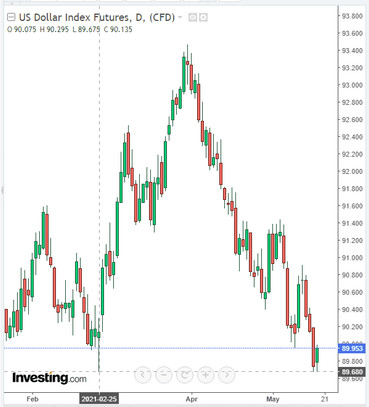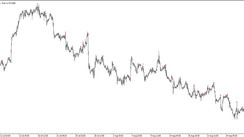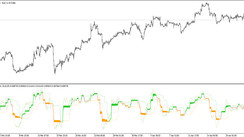As reported at the beginning of today's Asian session in the Australian Bureau of Statistics, the wage index for January-March rose by 0.6% in the 1st quarter of 2021 (+1.5% on an annualized basis), which exceeded the forecast +0.5 of economists and +1.4%, respectively.
WAGE INDEX - an indicator of the dynamics, increase or decrease in the average monthly wages of workers and employees for a certain period. The Reserve Bank of Australia pays great attention to this indicator when deciding on the interest rate.
The RBA said it expects high employment growth to continue over the next few months, as economic activity shows a strong momentum and leading indicators of labor demand are at high levels. Australia's unemployment rate fell by almost 0.2% from its peak in July 2020 and stood at 5.6% in March this year.
Signs of rising wages in Australia are becoming more evident, but the growth is not strong enough to make the Reserve Bank of Australia consider raising interest rates, economists say. In their opinion, an annual wage growth of about 3% is necessary for the RBA to consider the issue of tightening monetary policy (in the 1st quarter, an increase of only 1.5% was recorded).
However, despite clear signs that the Australian labor market is improving and the economic recovery since mid-2020 has been the fastest in 70 years, the RBA is not ready to talk about raising interest rates. The central bank still believes that even with much faster wage growth and sustained annual inflation in the target range of 2.0% -3.0%, the need for extremely low rates will continue to exist for some time. Inflation in Australia is not expected to start approaching 2.0% until mid-2023.
"The RBA management will not raise rates until inflation stabilizes in the range of 2% -3%. This requires a significant acceleration of wage growth compared to current rates", said RBA Governor Philip Lowe in a statement after April central bank meeting. "Achieving this goal will require significant growth in employment and a reduction in free resources in the labor market. The RBA expects that these conditions will not be met until at least 2024", Lowe said.
Roughly the same follows from the statements from the recent May meeting of the RBA. The minutes from this meeting were published on Tuesday. They predict a decrease in the unemployment rate to 5% by the end of this year and to 4.5% in 2022.
At the same time, the protocols state that the country's GDP may return to pre-crisis levels in the second half of 2021.
Reserve Bank of Australia executives have indicated their readiness to buy bonds further if this will help progress towards employment and inflation targets (the RBA considers an acceptable level of unemployment at 4.0% and inflation in the 2%-3% range to start considering tightening monetary policy).
They also confirmed that the conditions for tightening monetary policy are unlikely to be created until 2024.
The Australian dollar and the AUD / USD pair declined during today's Asian session and early European session. At the time of publication of this article, the AUD / USD pair is traded near 0.7735 mark, 65 pips below today's opening price.
In part, this decline was also due to the strengthening of the US dollar on the eve of the publication (at 18:00 GMT) of the minutes of the Federal Open Market Committee (FOMC).
As of this writing, DXY futures are traded near 89.95 mark, 27 pips above yesterday's local and 3-month lows of 89.68.

On Monday, Atlanta Fed President Rafael Bostic said in an interview with CNBC that despite rising prices, the Fed should help achieve high levels of employment, the absence of which he considers a more serious problem than inflation.
However, many market participants are cautious ahead of the publication of the FOMC minutes. Despite the prevailing view that the US Federal Reserve does not need to raise interest rates right now, it has happened more than once before that the central bank can make unexpected decisions that run counter to conventional wisdom.
In particular, it is worth paying attention to yesterday's statement by the former Treasury Secretary and adviser to the US President Lawrence Summers, who said that the current monetary policy of the Federal Reserve System could lead to serious troubles. In his opinion, the Fed's ultra-soft monetary policy, combined with huge spending on stimulus from the federal government, creates the basis for a vicious circle with respect to inflation.
He also noted that the new approach of the FRS, which provides for the abandonment of the practice of anticipatory containment of inflation even before it overheats, is unreasonable in a situation when the US budget grew by 15% of GDP.
Fed officials have repeatedly said they expect a short-term jump in price pressures, adding that they will continue soft policy, as the labor market is still far from full recovery. "Until we make significant progress (in improving the situation on the labor market), I think that our policy settings will have to remain very soft", Rafael Bostic said on Monday.
Thus, there is still a fraction of the likelihood that the Fed's minutes may contain completely unexpected information about the prospects for monetary policy. Therefore, the most cautious investors prefer to wait for this publication, staying out of the market, in order to make a decision on further actions.





